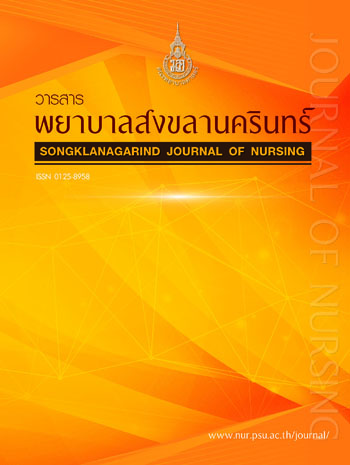Roles of Community Nurses as Advocators for the Rights of the Disables and Families
Main Article Content
Abstract
As Thailand is stepping into society, with increasing number of the elderly persons, patients having
non-communicable diseases and trafc accidents, the number of the disables in Thailand is also increasing.
Nowadays, the disables and families have more legal rights on health and living than they did in the past.
Community nurses have benefts to help promoting the health and quality of life of the disables and families.
With the helps and supports from the community nurses, the disables can live their lives with dignity.
This article was aimed to present perspectives and experiences of being a community nurse working at a
primary health care center and advocating for the rights of the disables and families. According to a review
of literature and actual experiences in the community, the disables and families had limitations and defcit
accesses to government services so that their rights were not fully or partially fulflled. Legally, the rights and
benefts of the disables include a right to receive a health assessment and a document certifying being the
disable, a right to receive basic medical care services, and a right to get physical and mental rehabilitation,
as well as other rights appropriate with contexts of each community. The author also gave recommendations
that primary care nurses should be encouraged to learn the rights and advocate for the rights of the disables
and families as well as learn how to provide care for people with disabilities and their families. Institute
of Nursing Education should include program care for the disabled in the nursing curriculum. state agencies
should also involved with the disabled manage one-stop services.


